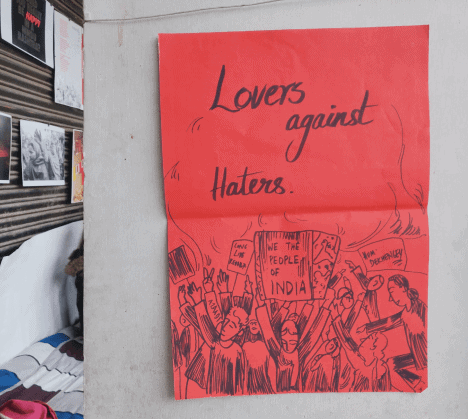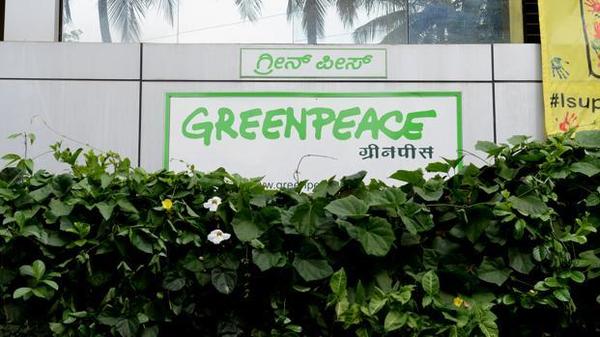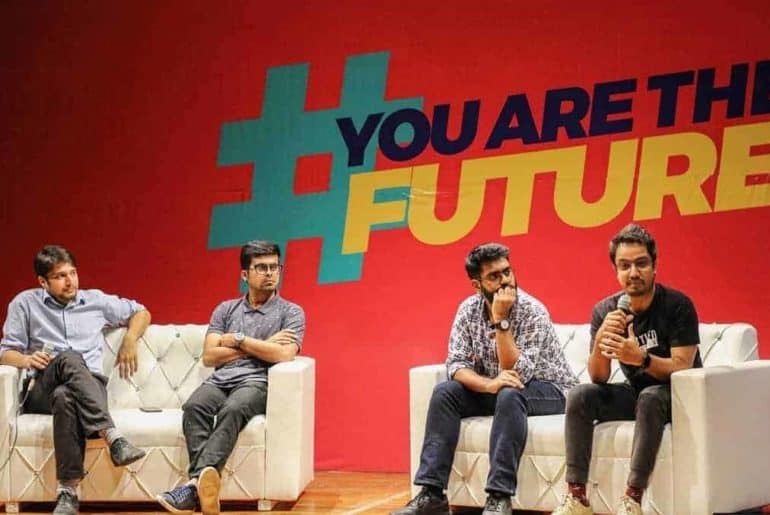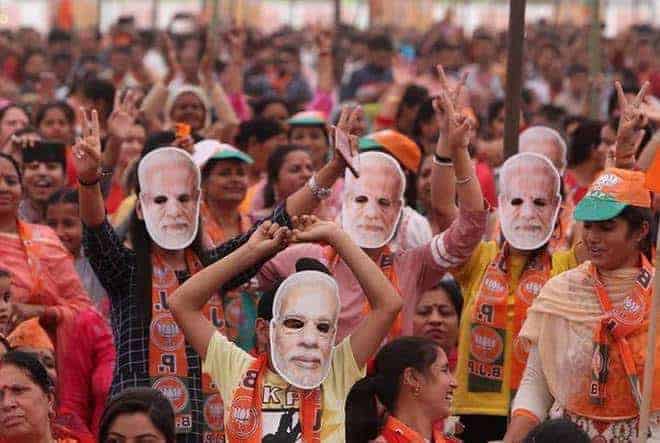The two-day long India Youth Conclave 2019, consisting of workshops, interesting panel discussions, and internship fairs, ended on a high note today.
On 31st August 2019, My Captain organised its 10th India Youth Conclave at Dilli Haat, Janakpuri. Many young people, including aspiring entrepreneurs and budding content creators, attended this conclave, which began with a workshop on entrepreneurship and digital marketing by Ruhan Naqash, the Co-Founder and Chief Marketing Officer of My Captain.
The workshop began with Naqash asking the audience about how many of them planed on becoming entrepreneurs and he was amazed by the number of raised hands. He told them that as entrepreneurs more lessons come from failures than from successes. He also provided the audience with facts like how nearly 90% of startups fail, something that left the audience in dismay. He focused on the ideology of “customer being the King” and said that in entrepreneurship, it’s all about the idea and listening to the target market. He also focused on how one doesn’t really need investments in start-ups if that holds back some young minds and said a good idea requires zero investment, something which the audience fairly agreed upon. He shared his own journey as an entrepreneur, the story of how he got an idea of online workshops and educational seminars in his first year of college and how he went door-to-door in his college hostel gathering his friends to assemble with him on the idea and not keep it a secret confined to him. The room full of young entrepreneurs seemed highly satisfied and inspired after the workshop, which was very interactive. Many present even shared their ideas of start-ups with Naqash.
A Photography Workshop conducted by Rahul Singh Manral took place at the same time. The session took off from his experience as an engineering dropout, and covered his journey till here. He believes that his trip to Egypt in 2013 was a revolution in his career. His session was filled with motivational quotes and the audience could really connect with his light sense of humour. When asked about the importance of rules, Manral said, “The Importance of any rule is to know it, but it is your responsibility to break it.” In his technical session about photography, he explored the development of light in photography and also shared some modern wildlife and action photography. Lastly, he ended his session by focusing on the fact that modern photography is not only restricted to Social Media, rather, his end goal is to make people want to do something when they look at his photographs. You can check out more of his work on his Instagram here.
The conclave also featured a great line-up of comedians. The show took-off with comedian Manekas Singh Mehta delivering some self-depreciation jokes. His set also talked about Punjabi and Delhite norms and was worth a watch. Next, Onkar Yadav talked about a lot of things ranging from childhood memories to the dating problems one faces in their college period, in his well-known dry sense of humour. Kushagra Shrivastava also delighted the stage with his presence. He talked about religion, tinder, and sports and even interacted with the production team and photographers. It was a show filled with laughter and even some very mature and well thought out jokes, which left the audience wanting for more.
A Creative Writing workshop with Dhruv Sehgal was organized after this where aspiring writers in the audience were familiarised with key concepts on how to write better. The audience was initially star-struck, and was keen to listen to the speaker’s journey and learn from the same. Sehgal said that one of the most important aspects of writing is observation. He said that observing content is free and that good writers can find content in the weirdest places. He stressed how “everyone has a story” and that a blank page is the most important instrument of a writer. He talked about the competition in writing, that being a writer for web series, your competition is not just Bollywood or Hollywood but other content providers like Facebook and Instagram as well, so to overcome that, one should be relatable to the viewers and focus on their unique style by being truthful. Dhruv insisted that rules are very important, contrary to the “rule-breaking” millennial generation as the real challenge lies in showing one’s creativity while following the rules and not while breaking them.
The Rap Battle followed next, which saw many young and enthusiastic students taking to the stage to beatbox and rap their original creations. From solo performances to duets, the performers were full of energy. This open platform gave many students a stage to showcase their talent which they don’t really get to otherwise since rapping is still an upcoming art form in India, and many people are yet to get acquainted with it.
The Psychology workshop with psychologist Prerna saw many students of Psychology in the audience. Prerna talked about how empathy and compassion are important when dealing with patients with mental disorders. She also narrated many incidents from her personal life where she emotionally went through a hard time when dealing with patients of sexual abuse and patients who had violent tendencies. She told the audience that if they wanted to pursue a career in Psychology, then they must follow their seniors and be strong when dealing with their patients.
During the YouTubing workshop, fans went crazy for famous YouTubers Sana, Shraddha Gurang, Kanishk Priyadarshini, Gaurav Taneja, and Himadri Patel. They inspired the audience with their personal stories of the rise to stardom and talked about how to make it big on YouTube. They talked about how YouTube, unlike Facebook and Instagram, provides them with a platform where they can post descriptive videos and how it is possible to build a huge community on it considering that the audiences know what they are looking for. On being questioned by an audience member on how to cope with negative public ideas of making a career out of YouTubing, the panel encouraged him and told hopeful YouTube stars that it is initially difficult to make a career on social media but that hard work and passion pay off in the end. This workshop concluded the first day of the conclave.
Day two of the India Youth Conclave organised by My Captain began with Naqash speaking to the audience about the story of My Captain.
He launched the My Captain app and discussed ideas about revolutionising online education. “To make online education sexy is my aim,” he said. He spoke about how the app works by removing barriers, making learning fun, and explaining concepts using practical examples.
The next speaker was the founder of Pet Street Cafe, Sonali Wadhwa who is an animal activist. Her team is her family. She spoke about her love for dogs and how dogs were her mental cushions, she narrated her story of Pet Street Cafe that went from two pet shops to a pet resort. “Being lost is part of the process,” she said.
“If you are not fearless enough to explore. You will not find what’s right for you,” she added. Wadhwa, ho is also a feminist, had this to say to the feminist hater: “If anyone hates the word feminist, I am sorry about you.”
With a six-year experience in Psychological counselling, Manvi Khurana, the founder of Karama Centre for Counseling & Well Being, explores the horizons of sexuality and the taboos that revolve around it in her enthralling session at the IYC’19 Delhi. Tracing sexuality back to the primary school Biology classes when a diagram of phallus served as the erotic recreation, how the myths and conjectures pertaining to masturbation make a crucial topic as sexuality turned into a giggle shot and Karma as somewhat of queer affirmative form.
Manvi further stresses on a sex-positive outlook and asks the youth to perceive it from a perception that carries the responsibility of being one, while claiming of being hopeful and optimistic of the future, she ends with a positive note in her valedictory words for the young audience”The future is bright cause the future is you.”
In the next session, popular author, celebrity journalist, live show host & motivational speaker, Surabhi Verma retrospected on her varied professional career as she talks about her 2018 release ‘And She Quit Her Job’. An alumna of Dayawati Modi Academy, Meerut and Kalindi College, University of Delhi, Surabhi emphasises on the essence of being a good writer. he recalls about the 2012 Delhi gang rape which generated huge national outrage and how the incident propelled her to pursue journalism. Working rigorously to get a diploma in Media & Journalism from Bhartiya Vidya Bhavan, after cracking the entry to The Hindustan Times, she quits her first job owing to a certain introspection and then goes onto OYO Hotels as a content writer lasting there for 3 hours. While her third job at a media house provided Surabhi with opportunity to meet her childhood icon Kareena Kapoor Khan, after interviewing a series of celebs and working as a TV presenter at the Doordarshan she leaves this job as well and starts working on her book ‘And She Quit Her Job’, Surabhi has worked with esteem organisations like India Today, ECI, ACMA & FSAI and has a reputed social media presence to her credit. She suggests the youth to be evolutionary & experimentative with their choices and asks them to give time to themselves, being grateful for what they have. She further quotes:
“Overnight Success is nothing and never let your circumstances take hold of your life, you are the master of your own life, do what you want to make of it.”
She ends her address with Maya Angelou’s lines:
“You may shoot me with your words, You may cut me with your eyes, You may kill me with your hatefulness, But still, like air, I’ll rise.”
The event later witnesses a very fruitful discussion between prominent writers like Dhruv Sehgal, writer, Little Things, Raunak Ramteke, senior writer, Filter Copy, and Anuj Gosalia, CEO and Founder, Terribly Tiny Tales.
The panel discussion predominantly focused upon essentials of writing as a process, choosing a target audience and making the content relatable. Structure of videos is talked about and its relevance. How a writer should never forget what essentially the story is and it will only work if it surprises itself and the audience. Anuj Gosalia and Dhruv Sehgal said, “Writing should not be result-driven, but process-driven, and it’s the process that can make or break you as a writer.”
They recount the incidents that made them writers and they share their words of wisdom with the audience comprising of writers on how to enter the industry. The 25-30 minute long panel discussion gave key insights on how important it is to not be a yes man in the industry and how much quality feedback is valued. Dhruv Sehgal said, “I just emailed Varun Grover, writer of Sacred Games, a few days back regarding what could have been done differently in the season two and he literally replied saying that he was the first one to give a feedback which astonished him.”
The discussion also shed light on the lack of vernacular languages in the mainstream content. They say that adding regional and local languages makes the content very relatable, very easily. However; they as position holders in media company are still finding ways to integrate regional beliefs with content made for masses.
Gurmehar Kaur, writer and a Literature graduate from Lady Shri Ram College, enlightened the audience filled with young adults about her journey with politics, war, and writing. She spoke about how student unions and writing paved the way for her to have a political opinion. Being just an 18-year-old from Jalandhar, when she first entered the University, she recounted the events that led to her being who she is now.
She started with shifting the attention from content creation on the internet to the violation of human rights, internet and cellular blackout being faced by the people of Kashmir, and how dire their problem is. She spoke of how important student politics has been in her life and how it was such a powerful tool specially in such a politically-aware city. On being asked, how dirty student politics has become by an audience member, Gurmehar answered: “Student politics is very imperative for each student. It gives you an opportunity specially after 2014, to have a different opposition and perspective which national politics might not provide you.”
She told DU Beat, “I believe even if you’re not contesting or part of a political party. You’re still a voter and have an essential role. Students must vote and ask the right questions to their leaders.”
She even shared her experience while writing her two books, The Small Acts of Freedom and The Young and Restless. She adviced all the budding writers to know that their first draft will not be great and that is acceptable. She encouraged all to tell their truth and how you’re only a writer when you write and not when you get published.
Feature Image Credits: Hitesh Kalra for DU Beat
Akshat Arora
[email protected]
Avni Dhawan
[email protected]
Juhi Bhargava
[email protected]m
Stephen Mathew







